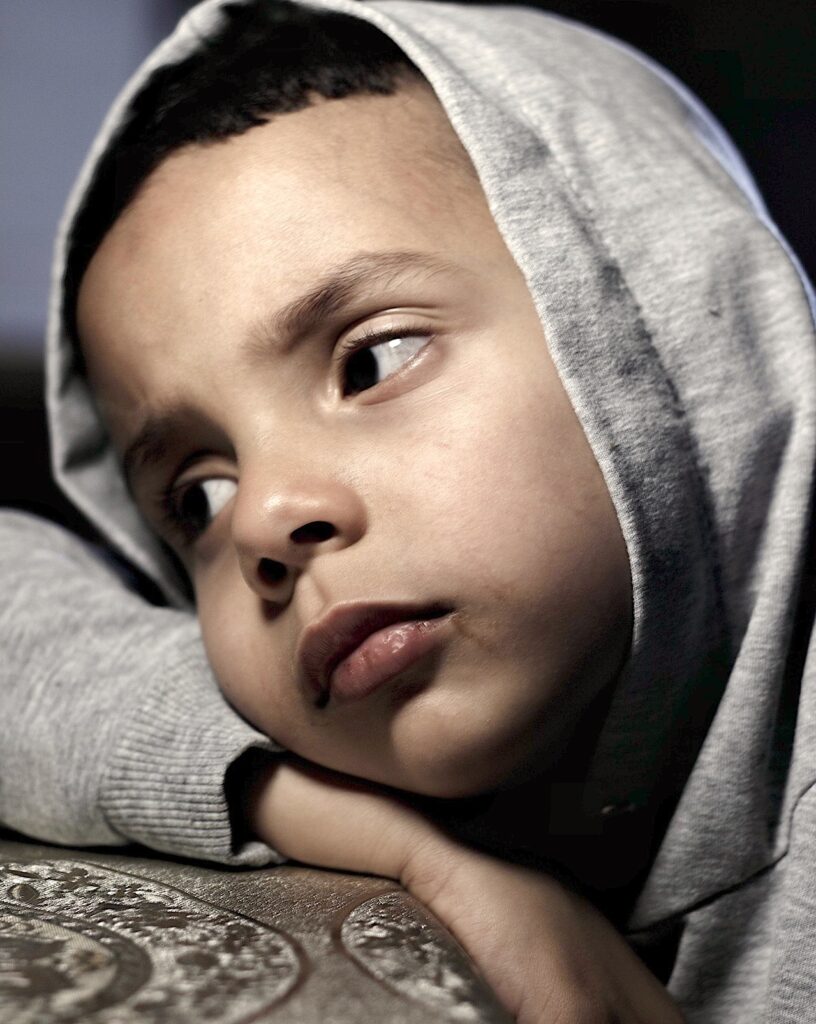Understanding Youth At Risk for Mental Health Challenges in BC
In British Columbia, from the bustling streets of Vancouver to the historic community of Fort Langley, every parent hopes for a childhood filled with joy, growth, and healthy development.
Yet, for a significant number of children and youth, factors beyond their control can unfortunately lead them down a path where their mental health is significantly “at risk.”
Understanding who they are, what they’re up against, and how we can support them is a crucial step toward building a stronger, more resilient people.
Understanding these conditions is about identifying vulnerabilities so that communities, families, and mental health professionals can step in with timely and effective support.
According to the Canadian Mental Health Association (CMHA), one in seven young people (or 14%) will experience a mental health issue at some point.
This post aims to shed light on the complex interplay of factors that can put a child’s mental well-being on the line.
What Does “At Risk” Mean?

What do we mean when we talk about children being “at risk” for mental health challenges? We are referring to a heightened vulnerability to developing mental health disorders or experiencing significant emotional distress.
This is a set of circumstances and exposures that increase the likelihood of negative outcomes without intervention.
According to the CMHA, “many mental illnesses – between 50% and about 70% – show up before the age of 18, so they can have a huge impact on a child’s development.”
Recognizing the signs and understanding the underlying causes is the first step towards prevention and early intervention.
Key Conditions That Put Kids At Risk in BC
The journey to becoming “at-risk” is rarely due to a single factor. More often, it is a combination of interconnected stressors and vulnerabilities.
Here are some of the primary conditions observed in British Columbia:
Adverse Childhood Experiences (ACEs) and Trauma
The Impact: Adverse Childhood Experiences (ACEs) include abuse (physical, emotional, sexual), neglect, and household dysfunction (e.g., parental substance abuse, mental illness, incarceration, domestic violence). It also includes a lack of secure attachment which can deeply impact a child’s developing brain and emotional regulation. In BC, as elsewhere, childhood maltreatment is a significant risk factor for various mental health disorders.
Why it puts them at risk: Chronic stress and trauma can alter brain architecture, leading to difficulties with emotional regulation, impulse control, attention, and forming healthy relationships. Children may internalize feelings of shame or worthlessness, or externalize their distress through behavioural problems.
Socioeconomic Disadvantage and Poverty
The Impact: Children growing up in poverty often face a multitude of stressors. This may include food insecurity, unstable housing, limited access to nutritious food, fewer educational opportunities, and reduced access to recreational activities. In BC, research indicates a higher prevalence of health disorders in children from lower socioeconomic neighbourhoods.
Why it puts them at-risk: Financial stress on parents can lead to increased parental mental health issues, family conflict, and less parental involvement and support. These factors collectively contribute to higher rates of anxiety, depression, and behavioural problems in children.
Family Dysfunction and Breakdown
The Impact: Significant family conflict such as parental separation or divorce and inadequate parental involvement can severely destabilize a child’s world. Additionally, inconsistent discipline, or a lack of warm, supportive relationships within the family unit, are also devastating for children.
Why it puts them at-risk: Children thrive on stability and predictability. Family breakdown can lead to feelings of confusion, fear, sadness, anger, and guilt. It can disrupt routines, social networks (e.g., changing schools), and financial stability, all of which are significant stressors on a child’s mental health.
Bullying and Cyberbullying
The Impact: Being a target of bullying, whether in person or online, can have devastating effects on a child’s self-esteem, sense of safety, and overall well-being. Cyberbullying, in particular, can be relentless and pervasive.
Why it puts them at-risk: Bullying leads to feelings of isolation, shame, and helplessness. It increases the risk of anxiety, depression, suicidal ideation, and can lead to avoidance of school or social situations, further impacting mental health.
Substance Abuse (Personal or Parental)
The Impact: Children whose parents struggle with substance abuse face unstable home environments, neglect, and increased exposure to trauma. For youth themselves, experimenting with substances can quickly escalate, often as a maladaptive coping mechanism for underlying mental health issues.
Why it puts them at-risk: Substance abuse in the family disrupts healthy development and creates chronic stress. For youth, substance use can exacerbate existing mental health conditions, interfere with brain development, and lead to a vicious cycle of addiction and mental illness. BC Children’s Hospital and other health authorities offer services for concurrent mental health and substance use concerns in youth.
Social Isolation and Lack of Belonging
The Impact: Feeling disconnected from peers, family, or community can be incredibly damaging to a child’s mental well-being. This can stem from frequent moves, difficulties forming friendships, or cultural barriers.
Why it puts them at-risk: Humans are inherently social beings. A lack of strong social connections deprives children of crucial support systems, opportunities for healthy development, and a sense of identity and purpose, increasing vulnerability to loneliness, depression, and anxiety.
Unidentified or Untreated Learning Conditions
The Impact: Children with conditions like ADHD, autism spectrum disorder, or specific learning disabilities may struggle in traditional educational settings, leading to frustration, low self-esteem, and social difficulties.
Why it puts them at-risk: Without appropriate support and understanding, these children can experience chronic academic failure, peer rejection, and feel “different” or “not good enough.” This can significantly contribute to anxiety, depression, and behavioural problems.
Building Resilience: The Power of Protective Factors

These include:
- Caring Relationships: Having at least one stable, supportive relationship with a parent, caregiver, or other adult helps children to receive the nourishment and stability needed to grow resilient and strong. When parents and caregivers provide consistent love, understanding, and open communication, they are essentially building a robust emotional toolkit for their child.
High Expectations: When children are held to realistic yet achievable expectations, it fosters a sense of capability and empowers them to embrace learning and build genuine confidence. It also helps to develop the inner strength to navigate the complexities of life.
Strong Emotional Regulation Skills: The ability to understand and manage one’s own emotions, especially from a young age, helps youths to manage big emotions at a time when these can be overwhelming.
It also helps to reduce impulsive and risky behaviours, fosters strong and healthy relationships, builds resilience, and enhances problem-solving skills.
Positive Self-Esteem and Self-Efficacy: A belief in one’s own worth and ability to achieve goals, can equip our youths with a strong core and confidence. Further, this will empower them to navigate questions about who they should be, what they should achieve, and how they measure up.
On the contrary, a strong belief in self will help them thrive mentally and emotionally.

Access to Mental Health Services: Early identification and intervention through accessible and appropriate mental health support, provides our youth with the coping skills and strategies they need to survive and thrive. Trained, experienced and client-centred therapists use therapies like Dialectical Behaviour Therapy (DBT), Cognitive Behavioural Therapy, to treat. Read about suicide rates affecting British Columbians.
Support for At-Risk Youth in BC
Ensuring that our youth have easy and affordable access to qualified mental health professionals is not just an act of compassion; it’s a strategic investment in their future and the health of our communities. It gives them the tools, support, and hope they need to navigate the complexities of life, manage risks, and emerge as resilient, well-adjusted adults.
British Columbia offers a range of services designed to support children and youth struggling with mental health challenges.
Here are Innova Therapy Inc., our counsellors are trained in evidence-based therapies such as Cognitive Behaviour Therapy (CBT) and Dialectical Behaviour Therapy (DBT) that can help people at risk. Our counsellors are also trained in Eye Movement Desensitisation and Reprocessing (EMDR) therapy for the treatment of trauma.
Organizations like Child & Youth Mental Health (CYMH), Foundry BC, and various community mental health agencies provide assessment, counselling, and support.
Resources such as Kids Help Phone, KUU-US Crisis Line, and 988 Suicide Crisis Helpline are available 24/7.
If you are a parent, educator, or caring adult in British Columbia and are concerned about a child or youth in your life, reaching out for help is a sign of strength.
Understanding the conditions that create vulnerability is the first step towards providing the vital support needed for every child to thrive.











